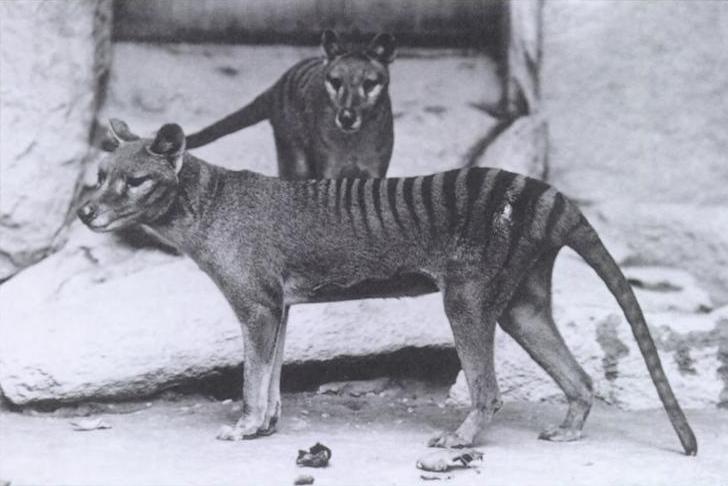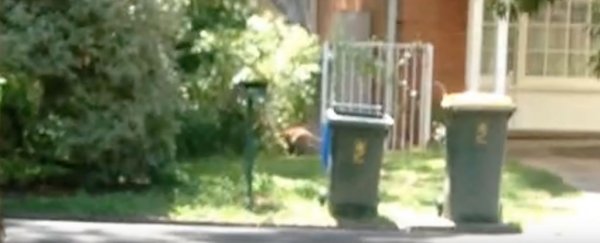Despite the fact that vertebrate species are disappearing faster than at any other time on Earth since the extinction of non-avian dinosaurs, humans love to keep the hope alive that maybe there are isolated populations of 'long dead' creatures hiding out in remote forests or murky waters.
And arguably no other species on the planet gets the 'maybe not extinct' treatment more than Australia's thylacine - or Tasmanian tiger - because the last known individual died out less than a century ago.
The latest of these alleged sightings was filmed in a suburb of Adelaide Hills in South Australia, with 3 seconds of blurry footage showing a rust-coloured mammal, around the size of a large fox, skulking behind someone's bins and into the bushes:

The footage was filmed back in February, but was released to the public only recently by the Thylacine Awareness Group of Australia - one of the country's biggest proponents of inconclusive Tasmanian tiger sightings.
The images are frustratingly inconclusive, brief, and blurry, with some saying that the creature carries distinctively thylacine characteristics, while others say it's nothing more than a fox with mange.
"The animal has a very peculiar gait, the way it walks is quite weird," Neil Waters from the Thylacine Awareness Group of Australia told Yahoo News.
While he told Nathan Davis at The Advertiser that a woman in the area claims to have seen the same mammal, "and says the animal she saw was definitely not a mangy fox", it's hard not to compare this juvenile fox with mange to the creature in the footage above:

And this is what an actual thylacine looks like:
 Baker; E.J. Keller/Wikimedia
Baker; E.J. Keller/Wikimedia
With this footage alone, Waters and his team are going to have a hard time convincing the experts, as mammals senior researcher Cath Kemper from South Australian Museum says she's struggling to see any definitive proof of a thylacine in the footage.
"We looked at it quite a few times and I couldn't say either way, you know, it's too blurry, but it's interesting," she told Clare Peddie at The Advertiser.
"He pointed to the base of the tail and he said it looks like it has a thicker tail at the base, which is sort of a thylacine characteristic, but I said I'm sorry, I don't see that in this."
"You never know," she adds, "if they do get a real picture of a thylacine or something, then they'll be laughing at us. I'd quite like that actually, wouldn't that be nice."
Waters says this is the first of five possible thylacine videos his organisation plans to release over the coming weeks, so hopefully they'll give us more to go on.
The thing is, footage like this - or even something that's far more clear - will pretty much never be conclusive, as far as science is concerned.
Researchers need actual, irrefutable proof if you're going to convince them that an extinct species from the 1930s has been existing under our noses this whole time, and that means fur, droppings, or an actual body.
In the meantime, if you want to see a real thylacine, here's footage of the last known individuals.
They're so incredibly beautiful, you can't really blame those who desperately want them to still exist:

